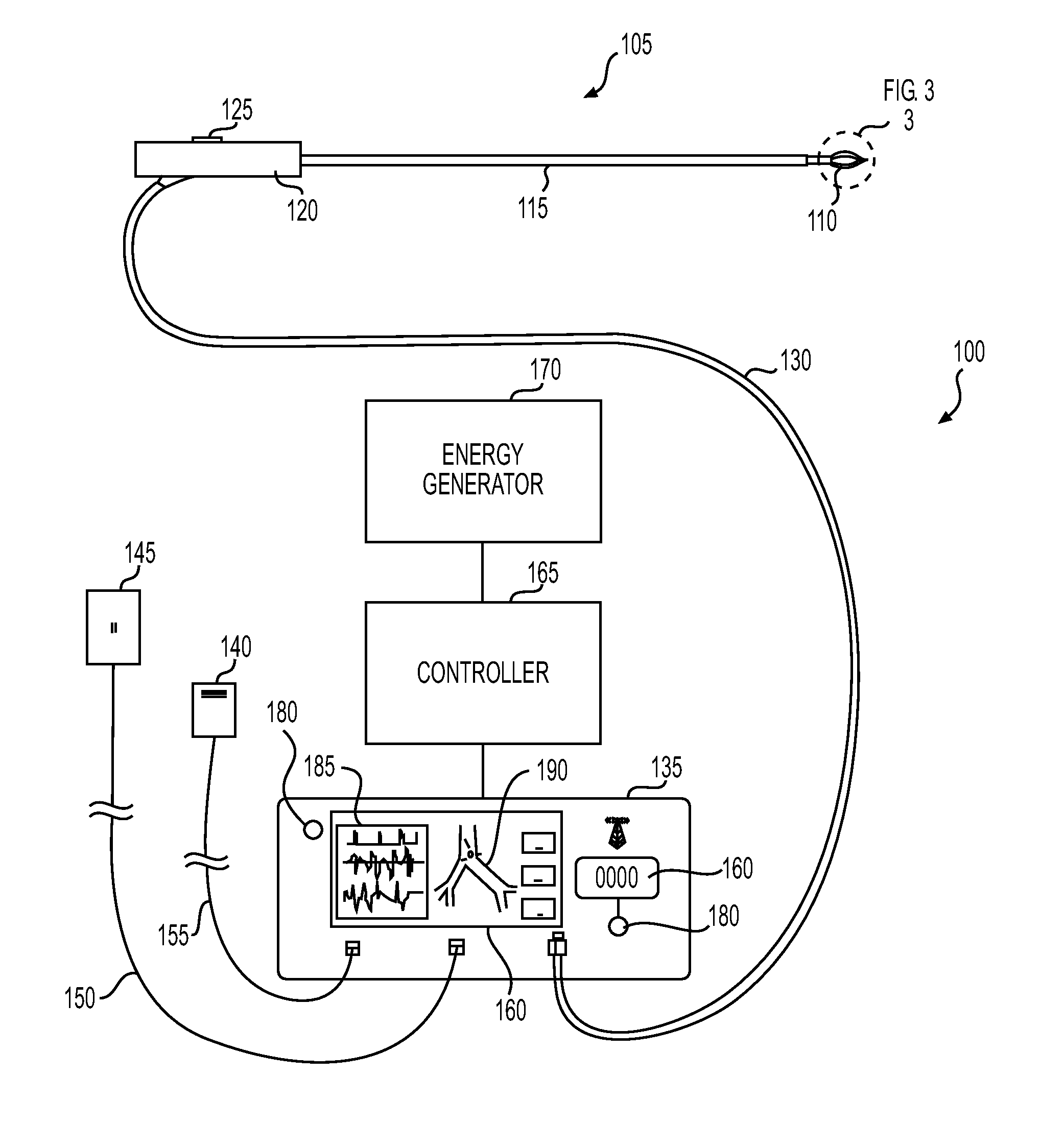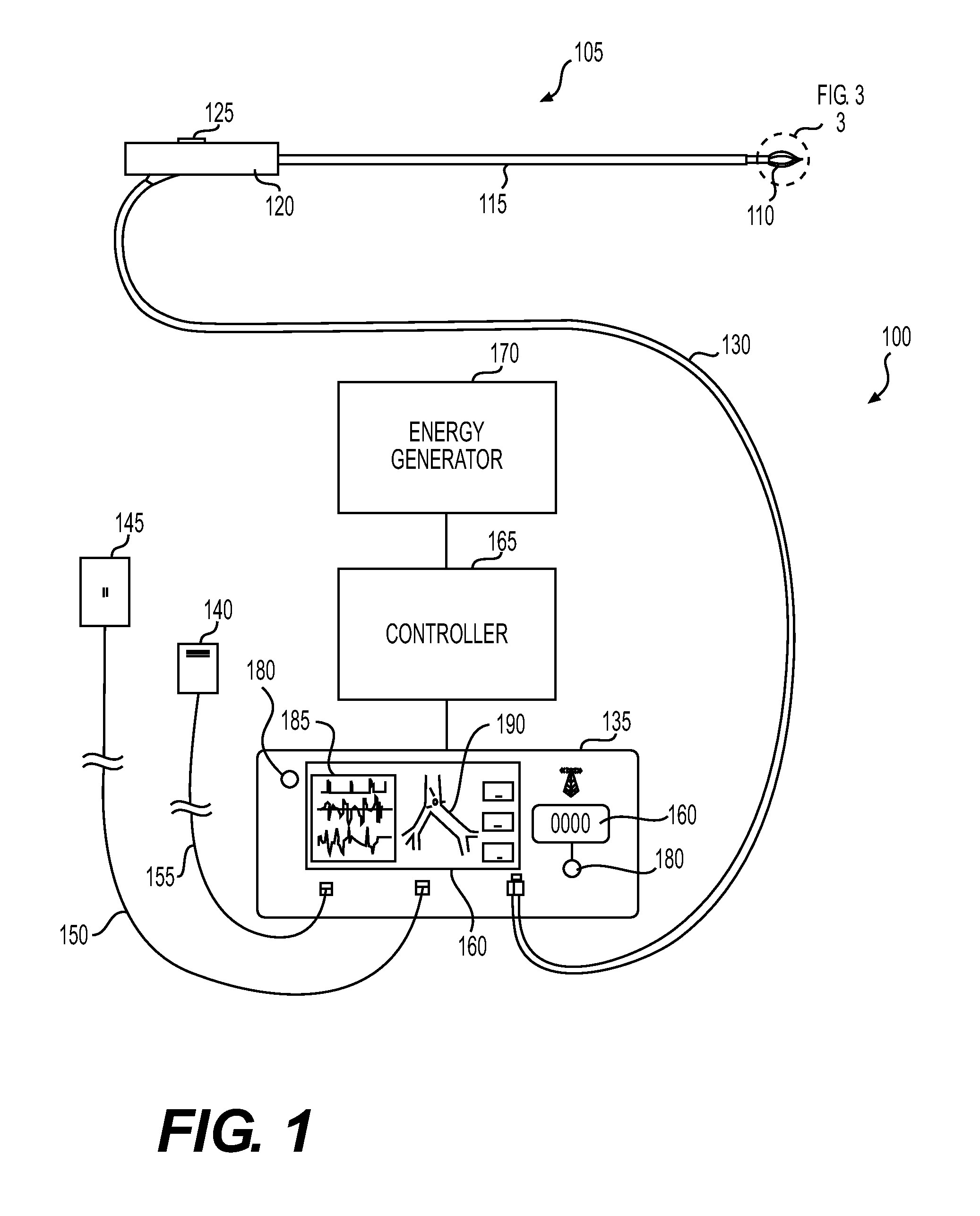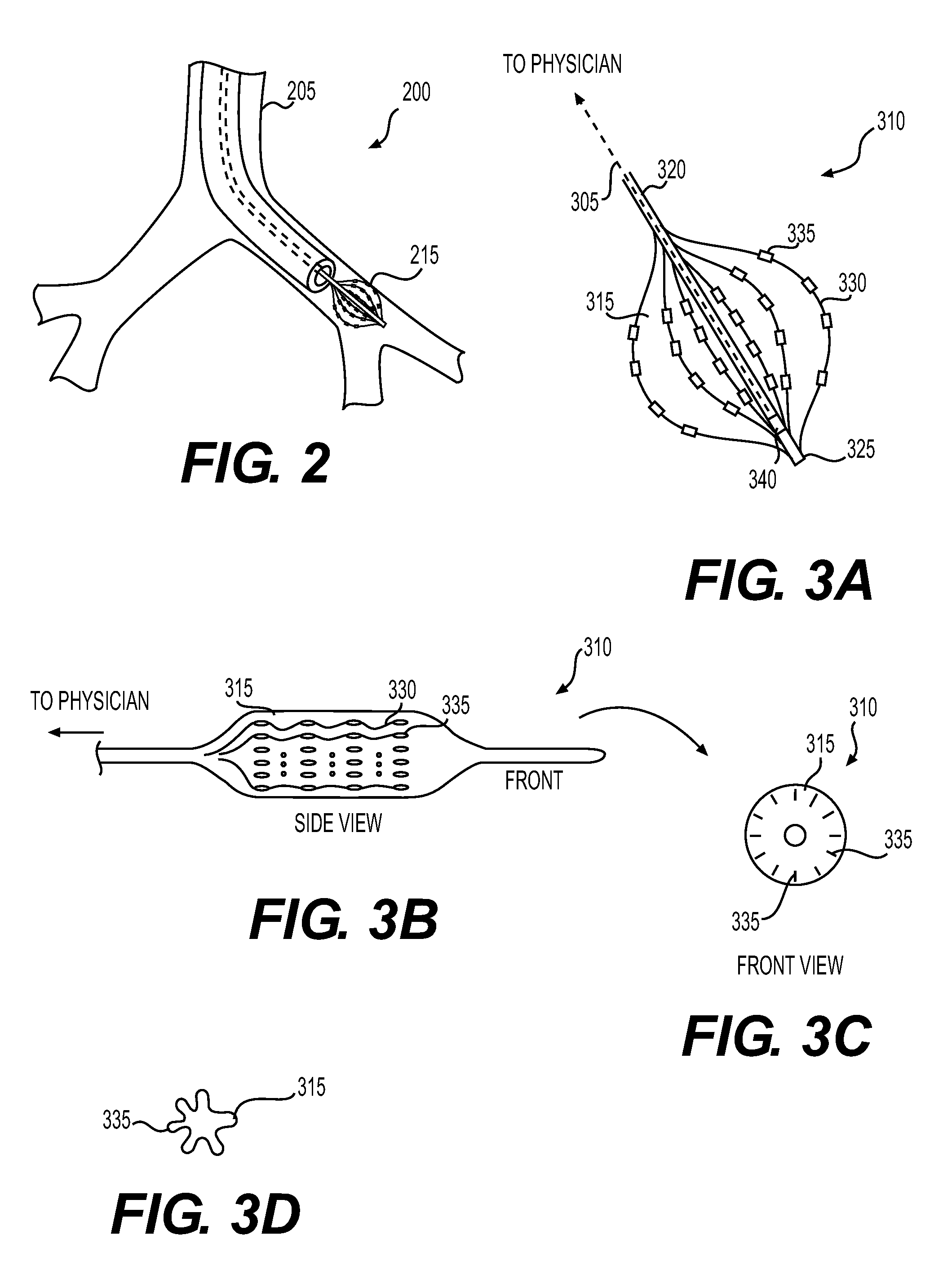Systems and methods for assessing and treating tissue
- Summary
- Abstract
- Description
- Claims
- Application Information
AI Technical Summary
Benefits of technology
Problems solved by technology
Method used
Image
Examples
example
[0080]The distal end of the medical device has a configuration as shown in FIGS. 3A-3C. Specifically, an expandable member has 48 contact elements (e.g. electrodes) arranged in a pattern of rows and columns. The expandable member has twelve rows arranged longitudinally, each row having four contact elements (e.g. electrodes). The expandable member has four rows arranged circumferentially, each row having twelve contact elements (e.g. electrodes). Each contact elements (e.g. electrodes) is spaced approximately 30 degrees apart for its circumferentially adjacent neighboring contact element (e.g. electrode). Each of the contact elements (e.g. electrodes) arranged longitudinally may be connected to each other in parallel via an electrically conductive rib member. The electrically conductive rib member is in turn coupled to an electrical voltage source via a user interface module and or controller and supplies current to the electrodes. The distal end of the medical device is positioned ...
PUM
 Login to View More
Login to View More Abstract
Description
Claims
Application Information
 Login to View More
Login to View More - Generate Ideas
- Intellectual Property
- Life Sciences
- Materials
- Tech Scout
- Unparalleled Data Quality
- Higher Quality Content
- 60% Fewer Hallucinations
Browse by: Latest US Patents, China's latest patents, Technical Efficacy Thesaurus, Application Domain, Technology Topic, Popular Technical Reports.
© 2025 PatSnap. All rights reserved.Legal|Privacy policy|Modern Slavery Act Transparency Statement|Sitemap|About US| Contact US: help@patsnap.com



